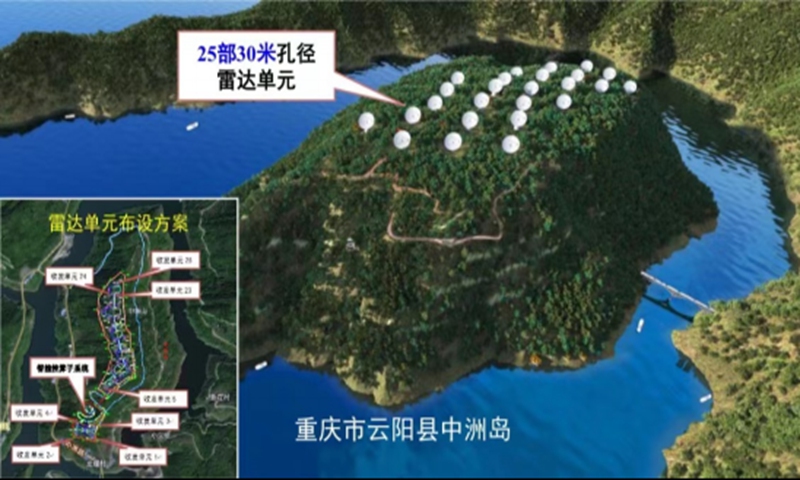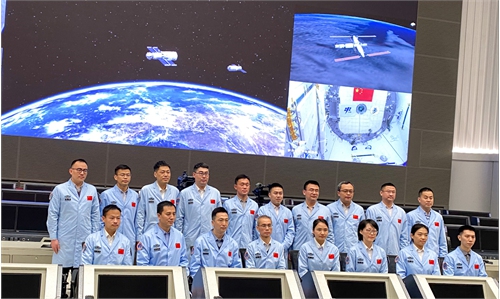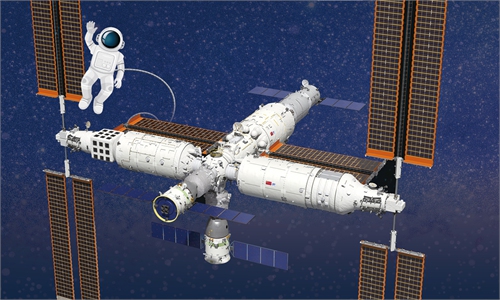China begins phase-II construction on far-reaching radar system, to boost defense against near-Earth asteroid impact

Randering of phase-II construction of China Fuyan Photo: Beijing Institute of Technology
The second phase of a high-definition deep-space active observation facility, China Fuyan, which is dubbed as the world's most far-reaching radar system, kicked off in Southwest China's Chongqing Municipality, the Global Times learned from the project lead Beijing Institute of Technology (BIT) on Tuesday.
The second phase of the project, codenamed China Fuyan [faceted eye], will involve building 25 radars with a 30-meter aperture, so as to realize the detection and imaging of asteroids over 10 million kilometers away, which will provide strong support for China's near-Earth asteroid impact defense and planetary science research.
Construction of phase II, which will cover an area of over 300 mu (20 hectares), is expected to be completed by 2025. It will be a new research and development phase for the project, Long Teng, president of BIT and a member of the Chinese Academy of Engineering, said in a statement sent to the Global Times.
China Fuyan will consist of distributed radars with more than 20 antennas, and each antenna will have a diameter of 25 to 30 meters. It is expected to become the world's most far-reaching radar system capable of carrying out high-definition observation of asteroids within 150 million kilometers.
Long said that because the system has multiple antennas, like the faceted eyes of an insect, it was given the vivid name of China Fuyan.
Through high-resolution observation of asteroids, spacecraft, the moon, Earth-like planets and Jupiter Galileo satellites and other deep-space targets, China Fuyan will meet the need for the defense of near-Earth asteroids and situational awareness of space. It will provide key support for the study of habitability of the Earth, planet formation and other frontier scientific research.
The project has three stages of construction. The first stage was completed in December 2022 in Chongqing, consisting of four radars with a 16-meter aperture. It successfully captured the country's first ground-based three-dimensional radar image of lunar craters.
After the completion of the second phase, the third phase of the project will expand the number of radar units to over 100, the Global Times learned.
Unlike the Five-hundred-meter Aperture Spherical radio Telescope nicknamed Tianyan, which is designed to collect passive observations of radio signals from space, Fuyan will be actively shooting radio signals to celestial bodies in order to obtain new observations, experts noted.
This will be very helpful for China's lunar exploration, as it is capable of monitoring Chinese spacecraft' journey to the moon, they said.



